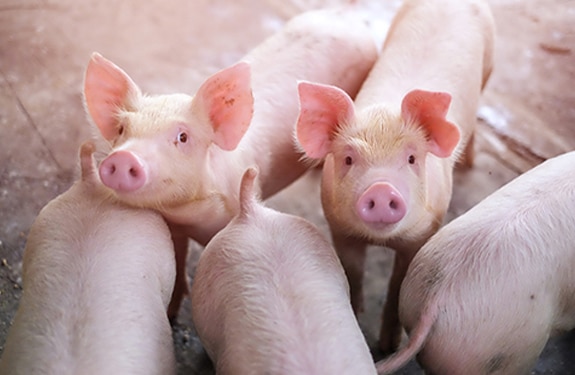06 Feb Transitioning to Zero ZnO: Focus on the microbiome
Prof. Dr. Jürgen Zentek, Freie Universität Berlin, Germany

The upcoming European ban on the use of therapeutic zinc oxide (ZnO) requires a redesign in feed formulation and overall health management. In this article series we learn from a range of top-notch experts what this ban entails for pig producers. We kick off with Jürgen Zentek who zooms in on the importance of the microbiome and how ZnO influences it.
How important is the pig’s microbiome?
The intestinal microbiota plays a major role in the development of the immune system, the stability of the digestive process and intestinal health. All of these are prerequisites for the overall performance and animal health. The microbiome should therefore be nurtured. The microbiome is a highly dynamic process and changes drastically in its composition from the day the piglet is born. Right after birth, the microbiome is dominated by clostridia and enterobacteria. A few weeks later, the microbiome looks different and includes considerably more lactobacilli and, in particular, a broad spectrum of anaerobes. Overall, the microbiome becomes more diverse, and thus more stable, over time.
Can we influence the microbiome?
Researchers have worked on this question intensively over the last years and it is not easy to give an answer, suitable for all farms. This is because we see big differences in microbiome composition of the pigs between farms. Management, feed and hygiene protocols may be different, but pathogenic bacteria are present on almost all farms. So why do we see more clinical gut health problems on some farms, compared to others? This leads to the question what we define as a healthy microbiome. If we have more knowledge on the ideal bacteria composition for example, we can try to steer towards this, to better control pathogenic bacteria and prevent infections. In my opinion, a healthy microbiome starts with a high diversity of bacteria. A balanced metabolic activity of the intestinal bacteria is also crucial.
How does weaning impact the microbiome?
Weaning is a stressful period for the piglet, as it comes with nutritional changes, relocation, regrouping and more. Stress also has an effect on the microbiome. It means that the diversity of the microbiome and the immune capacity of the host is reduced. This makes the piglet more vulnerable and this increases the risk of pathogenic bacteria to colonise and form toxins in the gut, leading to post-weaning diarrhoea. A more sustainable approach It is therefore key to reduce stressors as much as possible during weaning and supply the piglets with nutritional components that support gut health and immunity among others.
What is the role of zinc oxide on the microbiome?
The administration of ZnO has an extremely broad spectrum of effects along the entire gastrointestinal tract. For many years, ZnO has been successfully used to control post-weaning diarrhoea (PWD) and promote growth, mainly at pharmacological dosages of 2500 to 3000ppm. It has been extremely effective, although the precise mechanisms of actions of ZnO have not been fully unravelled yet. Numerous studies have shown that high levels of ZnO lead to transient and lasting effects during the development of the intestinal microbiota, affecting composition as well as metabolic activity. For example, ZnO reduces Enterobacteriaceae and the Escherichia group as well as for lactobacillus. Perhaps this is a key to explaining why animals get less diarrhoea. The use of high levels of ZnO will be banned next year, because of their environmental impact and the strong promotion of antimicrobial resistance that comes with high levels of ZnO. Luckily, there are other (better and sustainable) ways to positively influence the microbiome of pigs.
Program Zero ZnO
Phileo has developed the Program Zero ZnO to bring solutions to pig farmers to successfully make the transition to zero (therapeutic) zinc. The program focuses on 3 pillars: strengthening the microbiome, reducing pathogen pressure and enhancing feed intake. These 3 pillars include different effective nutritional solutions and technical support.







Sorry, the comment form is closed at this time.